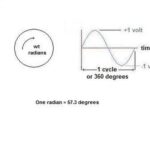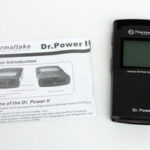Using an electric voltage tester can be easy depending on the type of tester you choose. This is a good starting point for our discussion, types of testers.
Types of Voltage Testers
Neon Volt Tester
The first type of voltage tester to be discussed is the simplest one to use and the least expensive to buy, the two-wire neon volt tester. This tester can test voltages from 0 to 500 volts. It comes with two wires and a neon light that lights when there is live current. One drawback to the neon volt tester is it only shows current and not the amount of current. It is a simple device to use. One wire is touched to a ground reference such as a ground wire or screw, the neutral or white wire or terminal, or the device screws if they are grounded. The other wire is then touched to the hot wire or terminal. If there is current in the device, the neon test light will glow.
Voltage Detector
Another simple voltage testing device is the voltage detector. This device looks like a pen and can be used to detect hot wires. Unlike any of the other devices, it will not show a complete circuit. It will only show you have voltage up to that point. The voltage detector is held up to the wire or device. It will light up and also produce an audible warning that you have voltage. This handy device can also be used to trace wires.
Plug- in Tester
The next tester is a plug in tester. This tester comes in two kinds. One is a simple tester and the other has a button on it to trip a GFCI circuit to test whether the circuit is wired correctly. Both have three lights on them to diagnose the wiring for simple problems. With a plug-in tester you can see if the outlet you are testing is wired correctly. Just follow the code that is on the tester. All you have to do is plug this handy device into the outlet you are testing.
Multi-meter
The next device is the most complicated of them all but it is also the most useful. The multi-meter can be analog or digital. It can test AC and DC voltage and current, Ohms and some can test continuity and diodes. The most important rule with multi-meters is to read the manual that comes with the device. The multi-meter usually comes with two probes that are touched to the hot and common wires. This will give you a reading of the voltage running through the circuit. You can also test circuits for continuity possibly showing breaks in the circuit. You can put a wire or device under an Ohm test to determine if the wire or device is good. You can test the voltage of batteries. As with all voltage testers read your owners manual to find all that the device is capable of.
As with all electrical devices, Practice caution. Electricity can be deadly. If you feel you are in over your head, call a qualified electrician.






